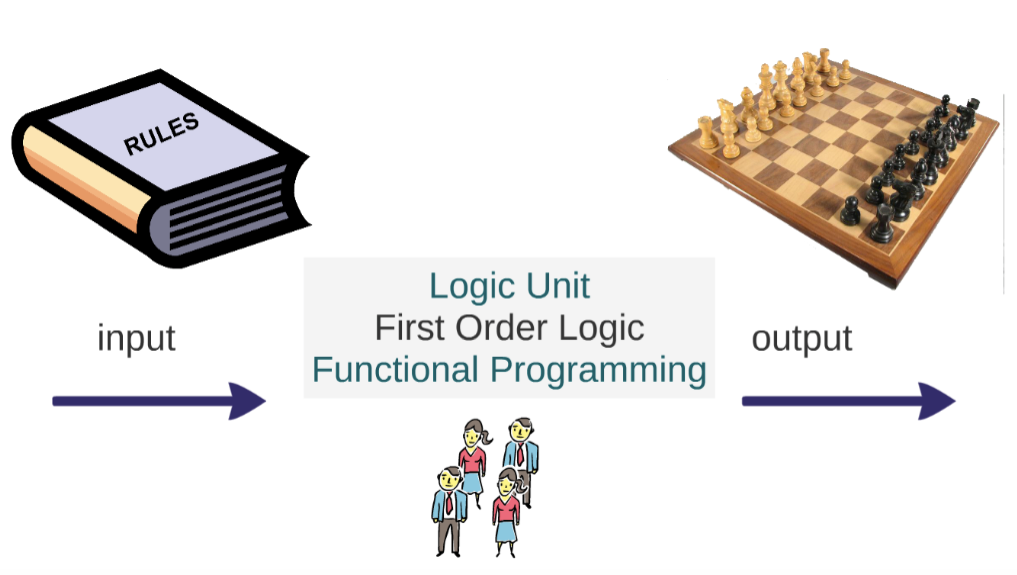The Evolution of AI: Unveiling the 7 Stages from Rule-Based Systems to the Enigmatic AI Singularity
Exploring the Evolution of AI and the Path towards Artificial General Intelligence and Beyond

In a realm where machines mimic human intelligence, I find myself captivated by the evolving landscape of AI, venturing from rudimentary rule-based systems to the alluring promise of an enigmatic AI Singularity on the horizon.
In today’s tech-driven world, grasping the significance of our journey to AI is more crucial than ever. In this article, I will do my best to break down each stage with an easy-to-understand explanation. To begin, let’s start with the first stage.
- Stage One: Rule-Based AI Systems
Rule-based AI systems, also known as one-task systems, represent the earliest stage of artificial intelligence.

These systems operate based on a predefined set of rules or algorithms given to them by programmers.
For example, a computer playing chess follows coded rules to determine the best move, but it cannot learn or adapt beyond these rules. Rule-based AI is ideal for tasks with clear-cut rules, such as diagnosing mechanical problems or processing tax forms. While reliable and consistent, their intelligence is limited, lacking the ability to learn or understand context, and they can’t handle scenarios not pre-programmed.
2. Stage Two: Context Awareness and Retention Systems
Context awareness and retention systems represent a significant evolution in AI. These systems can understand and retain context, meaning they remember previous interactions to form future responses.

Smartphone assistants like Siri or Google Assistant exemplify this stage. They not only execute commands but also learn from past interactions, enabling a more personalized user experience. Another example is the AI language model ChatGPT,
which uses context to generate human-like responses.
3. Stage Three: Domain-Specific Mastery Systems
Domain-specific Mastery systems excel in a particular field or domain.
They have a deeper understanding and skill level within that area, surpassing human capabilities.
Examples include IBM’s Watson, which excelled at answering questions on Jeopardy, and Google’s DeepMind AlphaGo, which defeated world champions in the board game Go. These systems can analyze vast amounts of data, identify patterns, and make informed decisions within their specialized fields.

4. Stage Four: Thinking and Reasoning AI Systems
At this stage, AI systems begin to mimic human thinking and reasoning processes. Using machine learning and deep learning techniques, these AI systems can understand complex concepts, solve unfamiliar problems, and generate creative ideas.
They resemble human intelligence in a more profound way, but they are still specialized tools for only reasoning and thinking tasks.
5. Stage Five: Artificial General Intelligence (AGI)
Artificial General Intelligence, or AGI, is a theoretical level of AI where systems possess human-like intelligence across a wide range of tasks. AGI would be capable of understanding, learning, and adapting just like a human, demonstrating self-awareness and consciousness.
However, as of now, AGI remains a concept and has not been achieved.
6. Stage Six: Artificial Super Intelligence (ASI)
Artificial Super Intelligence, ASI, surpasses human intelligence in most economically valuable work. An ASI system possesses cognitive abilities far beyond human capacity, potentially solving problems that humans can’t, and innovating at an unprecedented level.
This stage could raise significant ethical and safety concerns due to the immense potential for misuse and unintended consequences.
7. Stage Seven: The AI Singularity
The AI Singularity is a hypothetical future point in time when technological growth becomes uncontrollable and irreversible primarily associated with the emergence of Artificial Super Intelligence. It represents a profound and unpredictable change to human civilization, with debates on its implications ranging from the end of humanity to utopian scenarios.

Concluding Remarks
In conclusion, understanding the different stages of AI development helps us grasp the technology’s potential, and the ethical questions it raises. While we have made remarkable progress in AI, achieving true AGI and ASI remains uncertain and contentious. The journey through these stages reminds us of the incredible possibilities and challenges that lie ahead in the field of artificial intelligence.
